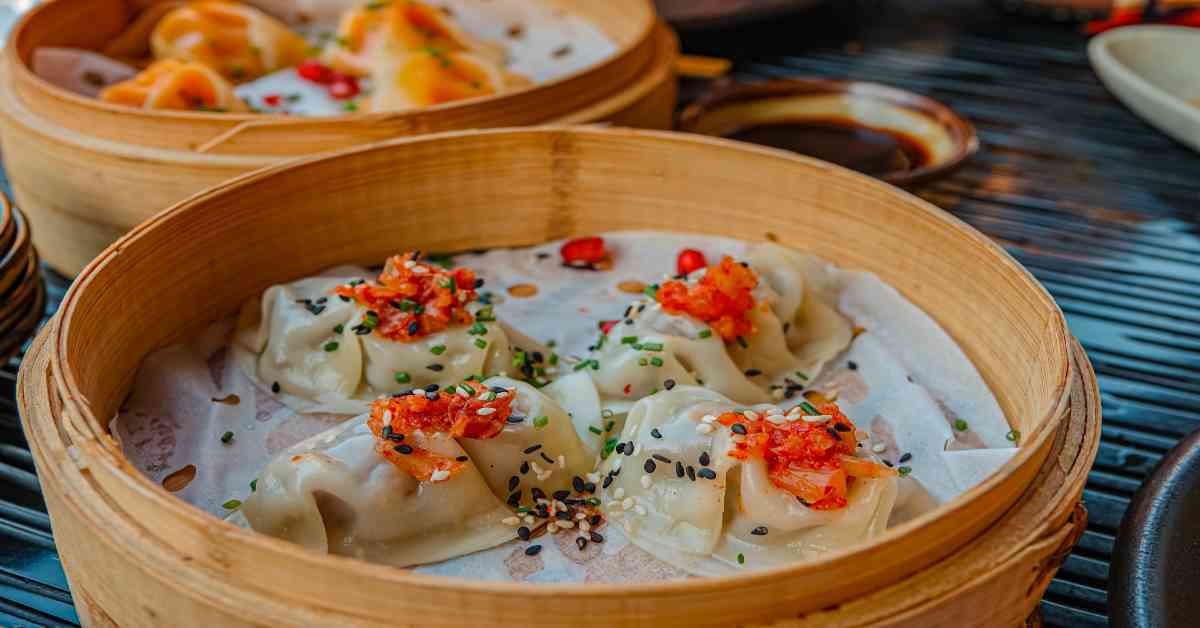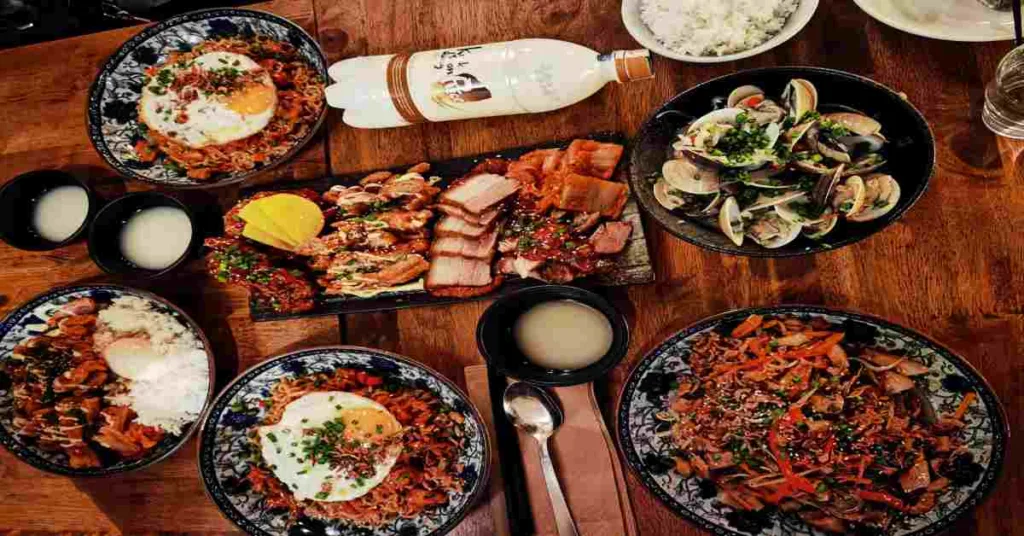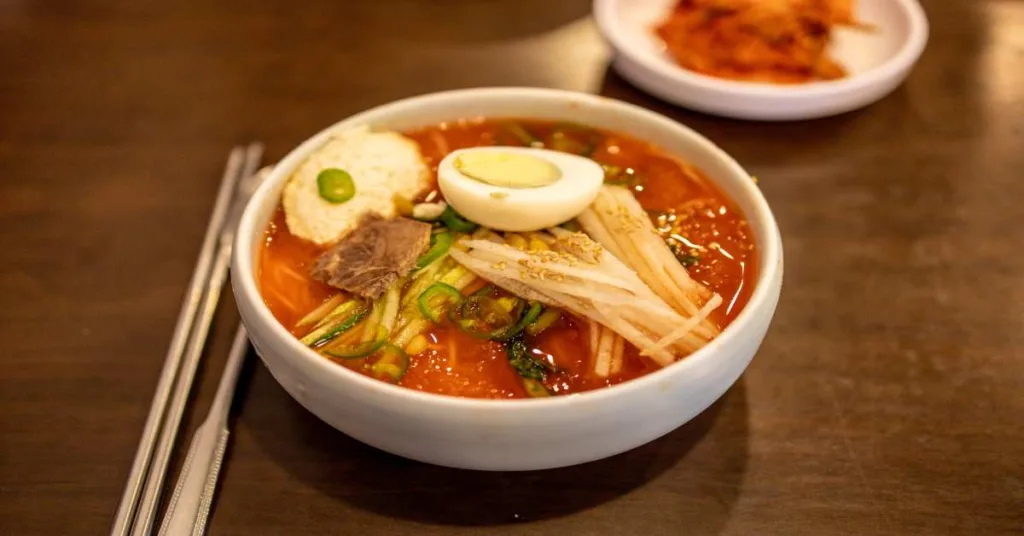Dim Sums a Chinese Famous Food
A wide variety of small Chinese dishes known as “dim sums” are typically eaten for brunch in restaurants. Even though there are dim sum meals in different Chinese cuisines, Cantonese food is typically associated with the majority of modern dim sum dishes.
Dim Sums Contents:
- What do Dim sums mean?
- What is the Etiquette to order Dim Sum?
- Best Dim sums dishes
- BBQ Pork Buns (Char Siu Bao)
- BBQ Pork Puffs (Char Siu So)
- Spring Rolls
- Rice Noodle Rolls
- Sponge Cake
- Chicken Feet (Feng Zhua)
- Crystal Shrimp Dumplings
- Sticky-Rice with the Lotus Leaf (Lo Mai Gai)
- Open Face Pork & Shrimp Dumplings (Siu Mai)
- Soup Dumplings (Xiao Long Bao)
- Sesame Balls (Jian Dui)
- Pan-fried Turnip Cake (Lo Bak Go)
- Egg Tart (Dan Tat)
What does Dim Sums mean?
Dim sum is a classic Chinese dinner consisting of small plates of snack items. It is one of the most well-known dishes in Cantonese cuisine. In this, a variety of small foods are offered in bite-sized pieces as part of the traditional Chinese breakfast meal. A favorite street snack from the northeast that is well-known throughout northern India is now available in your kitchen! The ideal steaming snack to satisfy those evening desires is dim sum. It includes various miniature foods, such as rolls, cakes, and dishes with meat, seafood, dessert, and vegetables. Today there are more than a thousand different kinds of dim sum.
A typical accompaniment to dim sum is tea. Residents of Guangdong enjoy drinking tea, particularly at lunch. As a result, at their tea parties, they typically eat dim sums for breakfast and lunch.
It is a well-liked medium for hosting social parties or getting together with friends and family. Before the term “brunch” even existed, dim sums were the first brunch. Although Dim sum is now consumed throughout China and the rest of the world, the dishes are thought to have originated in Guangdong in southern China before eventually finding their way to Hong Kong. Dim sum can now incorporate foods and customs imported from various regions of China.
However, the culinary art form is mostly unchanged. Yum cha, which means “drink tea” in Cantonese, is characterized by the welcoming chaos of push carts of steaming vegetables, haphazard stamps on a card indicating the amount of your bill, and a variety of small plates that together make up a substantial meal served with pots of hot tea.
What is the Etiquette to order Dim Sum?
To order Dim Sum, choose a tea first because it will play a major role in the dinner. After all, tea rooms are where dim sum first appeared. The person who is closest to the teapot should pour tea for guests before pouring tea for himself or herself, according to custom.
If water is running low in the pot, remove the lid and set it on the teapot’s side or top. For waiters, this is a common sign that you need a refill. A fascinating and distinctive experience, ordering food at traditional dim sum restaurants takes a keen eye.
However, it can be a little bit daunting for those who are unfamiliar. Some restaurants use the conventional wheeled cart system, where you flag down a waitress and indicate the food you want to be served next on your plate. In certain places, you can choose from menus that include things like fried rice or stir-fried noodles that don’t fall under the dim sum category. Additionally, some restaurants give you a paper menu and a pencil so you can mark out the specific items you’re desiring.
A wide range of steamed, baked, and fried delicacies are served in dim sum houses from trolleys that are wheeled around the restaurant and packed high with bamboo steamers. You can simply pay for what you have and place additional orders as they come by. Sharing is encouraged!
Best Dim Sum dishes
Dim sum recipes feature a variety of seafood, beef, and vegetable dishes that are cooked in a variety of methods, including steaming, frying, or baking.
The most well-known dishes are listed here to get you started:
- BBQ Pork Buns (Char Siu Bao): The traditional dim sum meal you must try is BBQ pork buns. They are constructed with soft, white bread that is packed with flavorful and sweet BBQ pork. After that, the bun is steam-cooked until it is very soft.
Unquestionably, BBQ pork buns are among the top dim sum dishes for individuals who are unfamiliar with dim sum and are seeking a “safer” option. They are fantastic, especially if you already adore pork.
- BBQ Pork Puffs (Char Siu So): BBQ pork puffs contain a filling that is similar to pork buns, but the filling is coated in flaky, buttery puff pastry rather than a soft, fluffy bun. Additionally, the filling is ample, so each mouthful has a satisfying amount.
- Spring Rolls: Spring rolls are the most common dim sum dishes. In spring rolls, components including carrots, cabbage, bamboo shoots, various vegetables, and meat like pig or shrimp are all rolled up in a wrapper. The roll is then deep-fried to give it a crunchy, crispy outside. But it’s difficult to resist grabbing one or two during a dim sum lunch because they are so delectable.
- Rice Noodle Rolls: Rice noodle rolls, which resemble spring rolls but aren’t fried, are a delightful and distinctive Cantonese meal.
It is prepared with rice noodles, some meat (often pork or shrimp), and veggies, all of which are covered in a thin sheet of rice paper. The role itself is typically on the milder side, which allows it to absorb the taste of the accompanying sauce.
-
- Sponge Cake: A popular Dim sums dessert is a sponge cake, which is created with egg whites, sugar, flour, and baking powder. The cake has a very light, fluffy texture and a delicate sweetness. It’s the ideal way to round off a dinner.
- Chicken Feet (Feng Zhua): Feng zhua, also known as chicken feet, is a dim sum meal that only contains chicken feet. Chicken feet are a popular and savory portion of the bird across Asia and Africa, despite the fact that they are not frequently included on the menu in Western meals. The skin, cartilage, bones, and tendons of the feet are all used to make dim sum-style chicken feet, which is why it has such a rich flavor.
Although there isn’t much meat inside, the meat you do receive is exceptionally high in collagen, which is excellent for human consumption.
- Crystal Shrimp Dumplings: A dim sums dish with shrimp is crystal shrimp dumplings. Shrimp is minced and combined with pork, as well as scallions, ginger, and cilantro. Then a clear wrapper is applied, which is manufactured from tapioca starch and water. With their semi-translucent exterior resembling a transparent crystal, crystal shrimp dumplings are extremely delicate and lovely to look at.
- Sticky Rice with the Lotus Leaf (Lo Mai Gai): It is a glutinous rice dish that is wrapped in a lotus leaf and steam-cooked. Usually, various items like mushrooms, Chinese sausage, chicken, and shrimp are combined with the sticky rice. The sticky rice has a distinctive flavor that is derived from the lotus leaf, and the additional ingredients deepen the flavor even further.
- Open Face Pork & Shrimp Dumplings (Siu Mai): Although it’s a common misconception, dumplings aren’t typically wrapped and folded. A dim sum meal known as siu mai is an example of an open-faced dumpling created with a wrapper that is only partially sealed on the bottom and sides.
A wonton wrapper with a mixture of vegetables, shrimp, and pork is used to make siu mai. After that, they are steam-cooked until fully done. While the pork grounds it with its hearty flavors, the shrimp gives the stuffing a hint of sweetness.
- Soup Dumplings (Xiao Long Bao): Due to their deliciousness and originality, soup dumplings are one of the most well-known dim sums meals. A pork and soup mixture is enclosed by a thin, delicate wrapping in these pastries. Pork, veggies, spices, and chicken broth are typically found in the soup filling.
To fold those ingredients into a dumpling wrapper, you need to make a cooled, gelatinous mixture. The gelatin mixture then transforms into a delectable broth when the dumpling is steamed, which you can consume in addition to the dumpling itself. Making these dumplings from scratch is quite challenging. Anyone who enjoys dim sums must try soup dumplings.
- Sesame Balls (Jian Dui): One of the best dim sums meals for fans of semi-savory pastries is sesame balls. They are made of deep-fried glutinous rice flour that has been formed into balls.
Sesame balls get their name after being covered in sesame seeds. Red bean paste, a sweetened paste produced from boiling and mashed red beans, is typically used to fill the interior of a sesame ball. Sesame seeds are a seed that is also incredibly nutritious because they include a lot of fiber, vitamins, and minerals.
-
- Pan-fried Turnip Cake (Lo Bak Go): A dim sums meal called turnip cake contains Chinese sausage, rice flour, and chopped-up turnips. The cake should be pan-fried until the outside is beautiful and crispy. Either eat it plain or dunk it in your preferred sauce.
- Egg Tart (Dan Tat): A dim sums delicacy known as an egg tart, or dan tat in Chinese, is made with materials that are frequently found in baked goods, such as milk, sugar, flour, vanilla extract, etc.
Similar to a pie crust, this pastry’s crust is flaky on the outside. Typically, milk and sugar are combined with the eggs to make a creamy, custard-like filling. After a savory meal, they make the ideal dessert.


